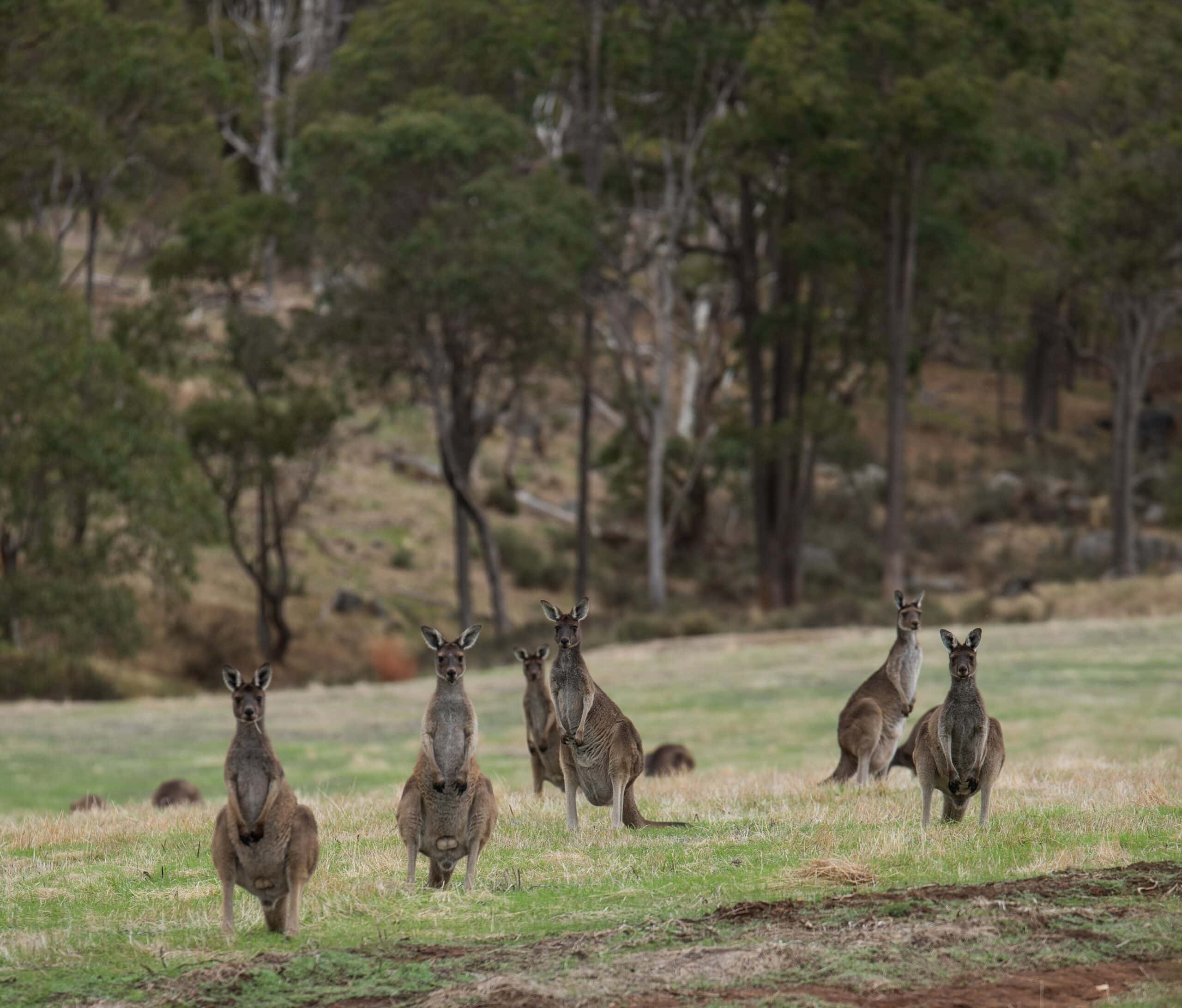Australia, on the other hand, boasts breathtaking landscapes, bustling cities, and an array of unique wildlife that captivates the global traveler. Its wildlife, ranging from adorable koalas to formidable crocodiles, mirrors the country’s rich diversity.
In this article, we embark on a journey through the enthralling realm of Australian wildlife. To begin, we’ll dispel prevalent myths surrounding these creatures. Then, we’ll have the opportunity to encounter iconic creatures up close and personal. Following that, we’ll delve into ongoing conservation initiatives, highlighting the efforts to protect and preserve Australia’s invaluable biodiversity. Lastly, we’ll pinpoint prime locations for wildlife enthusiasts to explore and appreciate the wonders of Australian fauna.
So, prepare to immerse yourself fully in the untamed wonders of Australia, as we guide you through this mesmerizing journey!
Introduction to Australia’s diverse wildlife
Australia harbors a wealth of distinctive and diverse wildlife on a global scale. Across its expansive and ever-changing landscapes, spanning from arid deserts to lush rainforests, Australia offers a haven for an extensive range of species. From minuscule insects to colossal mammals, the nation showcases a breathtaking biodiversity that is nothing short of a marvel to witness.
Common misconceptions about Australian wildlife
When it comes to Australian wildlife, many misconceptions often circulate. One common misconception is that all Australian animals are dangerous and venomous. While it is true that Australia is home to some venomous creatures, such as snakes and spiders, the majority of Australian wildlife is harmless and poses no threat to humans.
Another misconception is that kangaroos can be found hopping around every corner. While kangaroos are indeed iconic Australian animals, they are not as widespread as one might think. They are predominantly found in rural and remote areas, and spotting them in the wild requires some luck and patience.
Unique and iconic Australian animals
Australia stands renowned for its unparalleled and distinctive wildlife, a majority of which is exclusive to this remarkable continent. Among these extraordinary creatures, the koala takes the spotlight. With their endearing appearance and penchant for eucalyptus leaves, these marsupials pass their days in slumber or leisurely leaf-munching high in the treetops. Encountering a koala in its natural habitat is an experience of sheer wonder.
Another emblematic Australian inhabitant is the kangaroo. Famed for its robust hind legs and ability to cover vast distances in mighty hops, the kangaroo embodies the rugged spirit of Australia’s untamed outback. These marsupials have masterfully adapted to the harsh Australian terrain, making them a sight of unparalleled fascination.
Exploring Australia’s national parks and wildlife sanctuaries
Australia’s national parks and wildlife sanctuaries, on the other hand, provide a haven for its unique wildlife. Within these protected areas, a wide range of species thrives, and they offer visitors the unparalleled opportunity to observe them in their natural habitats. Whether you’re hiking through the ancient rainforests of Daintree National Park or snorkeling in the Great Barrier Reef Marine Park, a multitude of opportunities present themselves for you to connect with Australia’s wildlife.
Wildlife conservation efforts in Australia
Australia’s dedication to the conservation and safeguarding of its wildlife is evident. The nation has introduced an array of initiatives and programs with the primary goal of preserving its unparalleled biodiversity. A prominent example is the creation of national parks and protected areas, serving as sanctuaries for endangered species.
Furthermore, Australia has imposed stringent regulations and laws to thwart illegal hunting and trafficking of its wildlife. Additionally, substantial investments in research and monitoring programs are made to gain deeper insights into and effectively manage the country’s wildlife populations.
Wildlife tourism in Australia
Wildlife tourism is a popular activity in Australia, attracting visitors from around the world. Whether it’s swimming with whale sharks in Ningaloo Reef or watching penguins march along the shores of Phillip Island, there are endless opportunities to get up close and personal with Australia’s wildlife.
However, it’s important to choose ethical and responsible wildlife tourism operators. Opt for experiences that prioritize the well-being and conservation of the animals, and avoid activities that involve direct contact or disruption of their natural behaviors.
What are the best wildlife spots in Australia?
Australia offers a multitude of opportunities to spot its incredible wildlife. From the vast expanses of the Outback to the lush rainforests of Queensland, here are some of the best places to encounter Australia’s unique fauna:
Great Barrier Reef Marine Park: Dive into the crystal-clear waters of the Great Barrier Reef and witness the vibrant coral reefs teeming with marine life, including tropical fish, turtles, and even the elusive dugong.
Kakadu National Park: Explore the ancient landscapes of Kakadu National Park, home to a rich diversity of wildlife, including saltwater crocodiles, wallabies, and a variety of bird species.
Kangaroo Island: As the name suggests, Kangaroo Island is a haven for kangaroos, but it is also home to other iconic Australian animals such as koalas, sea lions, and echidnas.
Tasmania: The island state of Tasmania is renowned for its unique wildlife, including the Tasmanian devil, wombats, and a wide range of bird species.
The Daintree Rainforest: Venture into the oldest rainforest in the world, the Daintree Rainforest, and encounter a plethora of wildlife, including cassowaries, tree kangaroos, and colorful bird species.
Tips for photographing Australian wildlife
Capturing the beauty of Australian wildlife through photography can be a rewarding experience. Here are some tips to help you get the best shots:
Patience is key: Wildlife photography requires patience and the ability to wait for the perfect moment. Take your time and observe the animals’ behavior to anticipate their movements.
Respect their space: Remember to keep a safe distance from the animals and avoid disturbing their natural behavior. Use telephoto lenses to get close-up shots without intruding on their habitat.
Be prepared: Have your camera settings ready in advance to capture fast-moving animals. Use a fast shutter speed to freeze their movements and a low aperture to create a blurred background.
Study their habits: Understanding the behavior and habits of the animals you wish to photograph will greatly increase your chances of capturing unique and interesting shots.
Capture their environment: Don’t forget to include the animal’s natural habitat in your photographs. It adds context and tells a more complete story.
Indigenous perspectives on Australian wildlife
The indigenous people of Australia, on the other hand, have cultivated a profound connection to the land and its wildlife. For millennia, Aboriginal and Torres Strait Islander peoples have thrived in symbiosis with nature, drawing upon their deep-rooted understanding of the environment and its inhabitants for sustenance.
Intriguingly, indigenous cultures have woven intricate traditions and narratives intricately connected to Australia’s diverse animal kingdom. These captivating stories, moreover, not only offer valuable insights into the behaviors and attributes of these creatures but also reverberate as a powerful reminder of the imperative nature of respecting and preserving the natural world.
Wildlife volunteering opportunities in Australia
For individuals who aspire to make a difference and actively engage in wildlife conservation efforts, Australia offers a plethora of volunteering opportunities. Whether your passion lies in aiding with animal rehabilitation, actively participating in research endeavors, or extending support to dedicated conservation organizations, an array of avenues to get involved presents itself.
Engaging in volunteering not only grants you the invaluable opportunity to garner hands-on experience but also facilitates an in-depth understanding of the multifaceted challenges confronting Australia’s wildlife. Simultaneously, it empowers you to wield a direct, positive influence on their conservation. Beyond this, it serves as a deeply rewarding channel through which to foster connections with the locals and contribute to their overall well-being.
Conclusion: Embracing the Wild Side of Australia
Australia’s wildlife is an integral part of its identity and a source of pride for its people. From iconic animals like kangaroos and koalas to lesser-known species found in remote corners of the country, Australia’s wildlife is diverse, unique, and deserving of our admiration and protection.
By debunking misconceptions, exploring national parks, understanding conservation efforts, and experiencing wildlife tourism responsibly, we can deepen our appreciation for Australia’s incredible wildlife. So, make sure to include encounters with the locals in your Australian adventure and embrace the wild side of this extraordinary country.
Contact IC Australia to begin your wild journey Down Under


